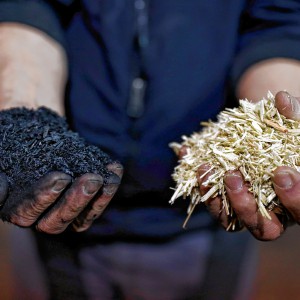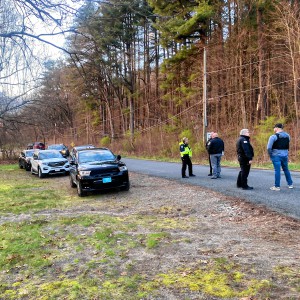Cape Plumbago entices a variety of colorful butterflies to your backyard
| Published: 09-09-2016 9:38 AM |
Growing Cape Plumbago is like having your own personal ticket to the butterfly wild kingdom. Not only will you be the proprietor of the daily nectar cafe but depending on where you live you will also be celebrating young ones as this is a host plant for the Cassius Blue butterfly.
This comes from someone who has become a recent butterfly geek if you will, but if you are just a lover of color then know you will be offered the rarest of blue for the garden from late spring through frost. This means whether you grow it as a returning perennial, shrub or treat it as an annual all the while relishing in the beauty of the sky blue flowers.
You might wonder why I am touting it now. The answer is that this native to South Africa is tough-as-nails and a persevering performer even in torrid temperatures. Botanically speaking it is known as Plumbago auriculata. Its common names are leadwort, which I hate, Plumbago which is OK and Cape Plumbago which I like best.
The Cape Plumbago was chosen as a Texas Superstar in 2005 meaning it was promoted from the citrus area of the Lower Rio Grande Valley to the far north reaches of the Panhandle. This also demonstrates that it can be grown in just about any good draining soil or pH.
We are growing ours at the Coastal Georgia Botanical Gardens as a 36-inch tall shrub in full sun. It blooms on new growth and it will reward you with more blooms anytime you feel the need to shape it or prune some lanky growth.
They are very tolerable of a partial sun environment. We have gotten to 18 and 22 degrees in two of the three winters since I’ve been here and they have rebounded nicely. Most sources promote root hardiness zone 8b but those in colder zones are finding success with an added layer of mulch in the winter. But don’t forget you can grow this rare-colored beauty as a terrific annual too.
The sky blue color of the Cape Plumbago offers many choice partnerships whether in mixed containers or in the garden. Over the years I’ve seen them grown so artistically with Pink Wave petunias, but my favorite may be to see them combine with rustic orange from the Beyond Paradise copper plant or the fairly new Campfire coleus. There is just something special about this blue and copper.
In much of the Savannah area deer have become way more than a nuisance, and therefore it gives me great happiness to say the Cape Plumbago is not on the menu. We are growing ours with the yellow shrimp plant (Justicia brandegeeana) and Black and Blue salvia (Salvia guaranitica) which are also both deer resistant.
Article continues after...
Yesterday's Most Read Articles
 Locking up carbon for good: Easthampton inventor’s CO2 removal system turns biomass into biochar
Locking up carbon for good: Easthampton inventor’s CO2 removal system turns biomass into biochar
 Northampton man will go to trial on first-degree murder charge after plea agreement talks break down
Northampton man will go to trial on first-degree murder charge after plea agreement talks break down
 Police report details grisly crime scene in Greenfield
Police report details grisly crime scene in Greenfield
 Area property deed transfers, April 25
Area property deed transfers, April 25
 Advancing water treatment: UMass startup Elateq Inc. wins state grant to deploy new technology
Advancing water treatment: UMass startup Elateq Inc. wins state grant to deploy new technology
 Super defers Amherst middle school principal pick to successor; one finalist says decision is retaliation for lawsuit
Super defers Amherst middle school principal pick to successor; one finalist says decision is retaliation for lawsuit
The last few days we’ve had the Cassius Blue butterfly laying eggs, various swallowtails and then the yellow Cloudless Sulphur butterfly, which seems to be nature’s version of the complementary color scheme. We have also had the hummingbird clearwing a member of the hawkmoth family.
There is one last Plumbago I want to mention, called doctorbush and is known botanically as Plumbago scandens. It is native to Arizona, Florida, and Texas and you occasionally find it or the named selection Summer Snow at specialty garden centers. When I was director of the National Butterfly Center in Mission Texas it fulfilled its mission too in bringing in all sorts of butterflies including the Cassius Blue.
Rare color, butterflies, deer resistance and a summer long performance are all strong attributes of the award-winning Cape Plumbago. I hope you will give it a try and see if you agree that it is great value for your landscape dollar.
(Norman Winter is director of the Coastal Georgia Botanical Gardens at the Historic Bamboo Farm, University of Georgia Cooperative Extension.)

 Valley Bounty: Grass-fed animals that feed the grass: Gwydyr Farm in Southampton focuses on ‘restoring the connection between land, food and people’
Valley Bounty: Grass-fed animals that feed the grass: Gwydyr Farm in Southampton focuses on ‘restoring the connection between land, food and people’ Weekly Food Photo Contest: This week’s winner: Mary Chicoine of Easthampton
Weekly Food Photo Contest: This week’s winner: Mary Chicoine of Easthampton  Speaking of Nature: A romantic evening for two birders — To hear the wonderful sounds of the Saw-whet Owl one must go outside at night
Speaking of Nature: A romantic evening for two birders — To hear the wonderful sounds of the Saw-whet Owl one must go outside at night Speaking of Nature: Where have all the birds gone?: They’re there, and here’s a handy tool to keep track of their appearances
Speaking of Nature: Where have all the birds gone?: They’re there, and here’s a handy tool to keep track of their appearances
